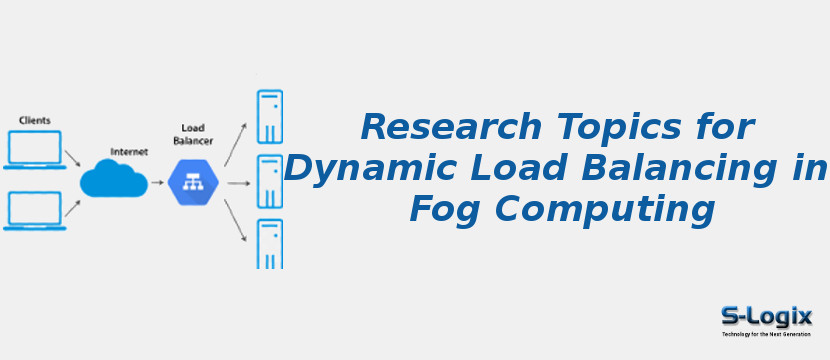Dynamic Load Balancing in Fog Computing refers to distributing workloads in a network of fog computing nodes dynamically and efficiently to check the optimal use of resources and reduce the burden on any single node.
It helps to balance the workload among different fog nodes based on their current computational and network capacities and to allocate new tasks to the most appropriate nodes in real time. Dynamic load balancing techniques reconfigure various running applications of transmission services and intelligent data processing.
Dynamic Load Balancing aims to improve the overall system performance, reliability and scalability while reducing latency, cost, and energy consumption.
The dynamic load balancing mechanism applies the current system state and adopts special policies such as:
• Migration: Migration defines circumstances for sending tasks from one node to another.
• Selection: Selection defines the submission of a task and considers several factors for task selection, such as overhead required for migration, task execution time, and the total number of non-local system calls.
• Location: Location defines low-loaded nodes and dispatches tasks to low-loaded nodes.
• Information: Complete information is gathered considering system nodes, and decisions are made.
• Resource Availability: The availability of computational and network resources, such as processing power, memory, and bandwidth, at the fog nodes.
• Latency Requirements: The real-time constraints on data processing and tasks, including the required latency and response time.
• Network Topology: The geographical distribution of the fog nodes and the underlying network infrastructure, including the network bandwidth and latency.
• Workload Characteristics: The characteristics of the workloads, including their size, complexity, and resource requirements.
• Monitoring: Continuously monitor the status of fog computing nodes, including their computational resources, network capacities, and current workloads.
• Assessment: Evaluate the current state of the system and identify potential bottlenecks and imbalances in the workload distribution.
• Decision Making: Based on the assessment, decide how to optimally distribute the workloads among the available fog nodes.
• Task Allocation: Allocate new tasks to the appropriate fog nodes, considering their current workloads, capacities, and geographical proximity to the data sources.
• Re-balancing: Continuously re-balance the workloads among the fog nodes based on changes in the system conditions and the availability of resources.
• Optimization: Continuously optimize the load balancing process to improve the performance, reliability, and scalability of the system while reducing the latency, cost, and energy consumption.
• Heterogeneity: The diversity of fog computing nodes in their computational and network capacities makes it difficult to balance workloads consistently.
• Real-Time Constraints: The need for real-time decision-making in the load-balancing process to ensure that data processing and tasks meet the required latency and response time.
• Dynamic Changes: The ability to adapt to dynamic changes in the system conditions, including changes in the availability of resources, the characteristics of the workloads, and the requirements of the system.
• Development of novel algorithms for dynamic load balancing specifically designed for the fog computing environment and considering the unique characteristics of fog nodes, such as limited computing resources, varying network bandwidths, and high latency.
• Study the trade-offs between centralization and decentralization in fog computing load balancing and investigate methods for finding the optimal balance between these two approaches.
• Exploration of new approaches for addressing the dynamic nature of fog computing applications, such as those highly sensitive to latency and requiring low-latency processing at the edge.
• Investigation of methods for improving the reliability and robustness of fog computing load balancing systems in the presence of node failures, network congestion, and other challenges.
• Examine the impact of emerging technologies, such as 5G networks, on designing and implementing dynamic load balancing in fog computing.
• A load balancing and optimization strategy (LBOS) using reinforcement learning in the fog computing environment.
• SSLB: Self-Similarity-Based Load Balancing for Large-Scale Fog Computing.
• Leveraging energy-efficient load balancing algorithms in fog computing.
• A mist-assisted fog computing-based load balancing strategy for smart cities.
